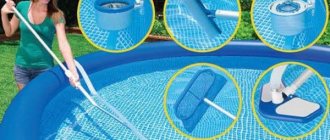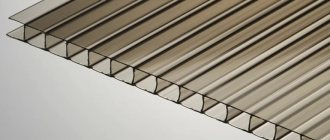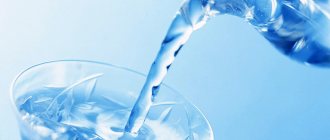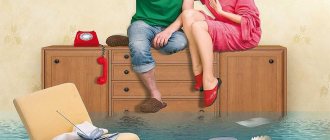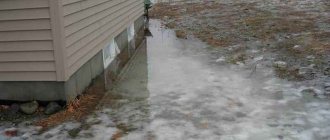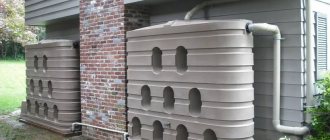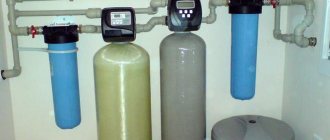After one person swims for half an hour in the pool, about 30,000 microorganisms are added to the water, plus skin particles and hair. In outdoor pools, dust, leaves, and various small insects are also added. All this “compote” serves as excellent food for the development of microorganisms. Previously, the problem was solved either by completely replacing the water, or by introducing living creatures that fed on microorganisms.
To keep the pool water clean, it must be cleaned. Special filters are used for this.
Today, it is expensive to change water regularly, and few people want to swim with living creatures. There is only one way out - organizing water circulation and purifying it using filtration units. There are two types of pools based on the method of water collection: overflow and skimmer. In any of them, water for cleaning is taken from the top and bottom. The collection from the bottom occurs in the same way, but from the surface differently.
Pool water filtration schemes
In overflow pools, the water splashed out of the bowl enters specially constructed drains, which direct it to the tank, and from there it is supplied for filtration. This is their peculiarity: the water mirror is on the same level with the side. Since most of the pollution is in the upper layer, the most polluted part of it ends up in the drain. But if there is no movement in the pool, there is no flow of water, and therefore it cannot be cleaned. This scheme is suitable for stationary pools. It is not applicable for inflatable and frame ones.
In skimmer pools, special suction holes are located in the upper part of the walls. If the structure is not stationary, then the screamers are hung on the side, immersed to a shallow depth. With this type of intake, the water mirror is located 20-30 cm below the upper edge of the side. This type of water intake for purification also has its drawbacks: contaminants are poorly removed from the surface, since the suction nozzles are located lower.
Water filtration system in overflow pool
In any case, some of the pollution settles, precipitating at the bottom. To remove this sediment, you need to take water from below and then feed it to the filter. To do this, at least one water intake hole is installed at the bottom. The number of holes depends on the amount of water in the pool, the level of contamination and the intensity of use. In this case, the rule must be observed: 75% of the water is supplied to the filter from the upper layers, and 25% through the bottom water intake.
An additional function of the bottom holes is to drain water from the pool. This procedure is necessary if it is preserved for the winter and requires major cleaning and disinfection.
Water filtration system in a skimmer pool
Water from the pool enters the coarse pre-filter, then the circulation pump supplies it to the filter station, where it is more finely purified. Further, a device for heating water, as well as a bacterial purification device (chlorine generator or ozonizer), can be installed in the system. After all the manipulations, clean and warm, it falls into the bowl.
The location of the input zones depends on the type of pool. When drawing through skimmers, purified water is supplied through holes located on the wall opposite the skimmers, and in overflow holes - at the bottom. This arrangement of water injection zones ensures that water circulates evenly throughout the entire volume, which means it is better purified.
Do-it-yourself cleaning
Some maintenance work can be done with your own hands. For example, using a net helps remove leaves, insects and other floating elements from the surface of the water. It is important to remember that the walls of outdoor pools are extremely susceptible to the appearance of mucus. Over time, this leads to the appearance of greenery in the bowl.
To prevent the appearance of unwanted formations, use an underwater vacuum cleaner. Only the size of the budget affects the type of vacuum cleaner that will be purchased - manual, semi-automatic or robotic vacuum cleaner.
Pump power calculation
The efficiency of the cleaning system is ensured by the pump: it drives water in a circle. Their parameters are selected based on the volume of the pool, the number of swimmers and the time during which it will be connected to the network.
If the water will be filtered during daylight hours, then select the pump power based on the data in this table
In a small artificial reservoir for home use, liquid should be pumped through filters 3-5 times per day. Based on these parameters, you determine the required pump performance. Just keep in mind that the equipment will not work for 24 hours (this is not a public swimming pool), but not more than 5-12 hours. So its power should be enough for the water to be purified as many times as possible during this time.
Intex Filter Pump for filtering pool water. Supply voltage 220-240 volts. Productivity - 5678 liters per hour
For example, a pool has 10 m3 of water. The equipment will operate for 4 hours. 10m3 will be pumped four times during operation. It turns out that 40 cubic meters must be “pumped” in 4 hours. 40 m3 / 4 hours = 10 m3/hour. It turns out that to solve the problem, you need a pump and filter that can process at least 10 cubic meters per hour. This is the required pump performance for a given pool with this operating mode.
Lists of the best devices
From the experience of selling filtration equipment, it became clear that the most popular systems from different segments were the models that we will describe below.
SF-mix manual up to 0.8 m3/h
AMETHYST - 02 M up to 2 cubic meters/day.
Aeration unit AS-1054 VO-90
TM Intex (28602)
The device is suitable for servicing small swimming pools. Productivity – 1250 liters in 60 minutes. The parameters of the outlet liquid comply with sanitary standards. At the same time, electricity consumption is only 30 watts (less than one household light bulb). Very easy to install. It is connected using two corrugated hoses, it is even possible without insertion. It costs less than three thousand rubles, so almost any family can afford to install it.
INTEX 26652
A complete device with all the necessary functions (flushing, different operating modes, decent throughput, timer, emergency shutdown). It has proven itself well in servicing medium-sized reservoirs. It is in demand for equipping stationary facilities. The working fluid is sand. Optimal ratio of quality, power and price (up to 21,300 rubles).
220-240V JILONG FILTER PUMP 29P415EU
Autonomous system – filter-pump. Requires minimal effort to put into operation. Due to its low cost (RUB 3,000) and simplicity, it is one of the most popular models for frame structures. The cartridge is capable of cleaning foreign particles 15 microns in size.
Types of Pool Filters
Filters are used to purify the water in the pool. They are distinguished by the material used for filtration. They happen:
- mechanical,
- chemical,
- combined,
- electrophysical.
Mechanical filters
Sand, a special membrane (woven or not), and activated carbon are usually used as a filter element. Their principle of operation is simple: passing through a layer of sand, a membrane or a layer of coal, most of the contaminants settle on them. At the output we have water without most of the impurities, which returns to the pool. This is an option for water purification without chemicals, but it is acceptable only for small volumes of water: no more than 10 m3.
Quartz filter for pool
Depending on the filtration material used, mechanical filters are:
- Quartz filter for pool. In them, water is purified by passing through special sand. Its replacement period is 3 years. The main disadvantage is that only particles larger than 20 microns are retained, all others remain in the water. One subtype of this uses glass sand.
Sand filters - quartz and diatomaceous earth - have a similar design.
Only the “filling” is different. They are available with side or top pipe connections. Due to the smaller size of sand grains, the water in the pool is cleaned twice as well. In addition, the service life of such sand is 5-6 years. The peculiarity of such devices is that they need to be cleaned daily. For cleaning, a six-position valve is used, which allows the system to operate in several modes, one of which is sand washing. By periodically switching the valve, you wash out the sand. - Diatomite filters for pools . Here the contaminants settle on the crushed shells of marine life. With their help, all particles larger than 3 microns in size are retained, i.e. The cleaning is very high quality. The disadvantage is that the filler needs to be changed once every six months, and it costs a lot.
- Cartridge filters for pools . A whole system of mechanical removable filters of different densities allows you to retain particles larger than 10 microns. Pool water purification is more thorough than when using sand. Moreover, there is no need to clean such a filter daily. Once dirty, the cartridge can be removed and washed; if the dirt is no longer washed out, it needs to be replaced. Maintenance is not difficult, but you need to have a supply of cartridges (it’s cheaper to buy with the pool). Despite easy maintenance and a good degree of purification, this type of filter is less popular than quartz filters: they cost more.
Replacement filter cartridge in the INTEX pump
Electrophysical filters for swimming pools
Electrophysical filters for swimming pools appeared not so long ago. They use ozone, ultraviolet radiation, copper and silver ions for purification.
Purifying pool water with ozone is one of the most harmless and environmentally friendly methods. The process uses the powerful oxidative properties of ozone, which, passing through water, destroys all bacteria without changing the composition of the water. During the reaction, ozone is released back into the atmosphere.
Advantages of this method:
- The high oxidative activity of ozone destroys almost all harmful organisms.
- When processed in water, the amount of oxygen increases, which leads to the absence of odors.
Not bad, but there are also significant drawbacks:
- To carry out ozonation, a special installation is required. It's expensive.
- An overdose of ozone is harmful to the body. For the concentration to be safe, it should be no more than 0.03 mg/m3, that is, three and a half times less than chlorine. The situation is complicated by the fact that the effect of this substance on the body has not yet been fully studied, and what is known does not inspire optimism. In Germany, for example, the use of new installations is prohibited.
Scheme for purifying pool water with ozone.
The method for purifying pool water with silver and copper is based on the process of electrolysis. As a result, non-ferrous metal ions are released into the water, destroying bacteria and algae. The water does not change its composition, nor does it change color or smell. This cleaning method has one drawback - it cannot neutralize fungi.
The scheme for cleaning and disinfecting the pool in this case is simple: after the filter, a container with electrodes made of the appropriate metal is installed, to which direct current is supplied. The ions it knocks out disinfect the water.
The use of ultraviolet radiation is another way to purify pool water without chemicals. The effectiveness of ultraviolet light is known to everyone, but this method will not work in cloudy or heavily polluted water. This method of treatment preserves all the beneficial properties of water, but the effect does not last long: microorganisms that enter the water after treatment successfully multiply. Therefore, this method is recommended to be combined with some type of reagents.
Connection diagram for an ultraviolet water filter. The installation is connected after the mechanical filter and serves for disinfection
Chemical treatment of pool water
Chemical filtration systems purify water using reagents and can carry out one or more operations simultaneously (depending on the model). To ensure high-quality cleaning of the pool, it is recommended to carry out a whole range of measures:
- Use bacterial cleaning preparations. The most common of them are: chlorine, bromine or active oxygen. Chlorine is known to everyone - it is a good disinfectant, but it can cause allergies, and also has a persistent unpleasant odor. In addition, many chlorine compounds are poisonous. But this is one of the most effective drugs.
Purifying pool water with chlorination/bromination
Bromine cleans no worse, but has no odor. Active oxygen, when dosed correctly, does not harm humans or nature and purifies water well, but such preparations are expensive. Purifying pool water with active oxygen is, when done correctly, one of the most harmless, but nevertheless very effective methods. - Periodically, special flocculant preparations are used to eliminate fat particles and small contaminant particles that were not caught by the filters. They “knock down” small particles into larger ones, which are then “catched” by the filters. They are needed if even after cleaning the water remains cloudy.
- Use preparations to kill microscopic algae.
- Maintain a neutral Ph balance. Before adding any drugs, you need to measure the acidity level of the water, and then add the appropriate drug in the calculated dosage (the calculation is given on the package). For many of the above drugs, there is a specific Ph level at which they act effectively. Therefore, before treatment, the acidity of the water is measured and adjusted to the required value.
For primary water purification when using chemical filters, nets, nets, and vacuum cleaners are used, which do a good job of removing large particles. Reagents handle the rest.
Combined filtration systems
Combined filtration systems contain both mechanical and chemical filters. Since this pleasure is expensive (both the equipment itself and the filters/reagents), such systems are installed in large and public swimming pools. If you install a sand filter, and after it, for example, an ultraviolet installation, this will be a combined system. Since there are many devices, there can be many combinations. Below is a drawing of a water filtration and disinfection system in a large stationary pool. In addition to the sand or cartridge filter, there is:
- heat exchanger, which is used to heat the water in the pool;
- circulation pump providing the required pressure;
- ozonation systems (3), ultraviolet treatment (2) and chlorination (4).
Scheme of water treatment in a stationary public swimming pool
Only such multi-component purification can guarantee the safety of water in public swimming pools, and even then not 100%. But for a small swimming pool in a bathhouse, it is quite enough to use mechanical filters and periodically drain the water, carry out mechanical and perhaps chemical cleaning of the bottom and walls of the pool.
Read about the means of mechanical and chemical purification of pool water in the article “Cleaning a pool: means and methods”
What to look for when purchasing
Here are some important points to consider when purchasing equipment:
- Filter type . When purchasing a device, you will have to choose from the three types of pool filters described above. Each of them has both pros and cons, and in one case it will be appropriate, but in another - not. This must be taken into account.
- Electric pump power . The power of the unit’s pump determines how much liquid it can pump per unit of time. Devices with powerful pumps should be purchased if you have a large swimming pool. For compact or collapsible tanks, weak pumps are also suitable. Power directly correlates with price: the higher it is, the more expensive the device will cost.
- Build quality . The main point that you should pay attention to when checking the overall build quality of the unit is its tightness. The pipes where they connect to the body must be intact and have no gaps or backlashes. Otherwise, they will leak water and your pool filter will be wasted.
- Manufacturer . The market contains both branded units and products from little-known Chinese companies. In general, quality does not depend on the brand. However, products from well-established manufacturers are usually more reliable in operation and are less likely to fail. Therefore, preference should be given to them.
- Price . In stores you can find both very expensive and very cheap equipment. The optimal choice would be the “golden mean” - products in the mid-price category. They have quite acceptable quality and reliability, and their price is not high.
Before purchasing, ask the seller to test the device in the store. You don't have to run water over it. It is enough to run the filter empty. This will ensure that the electric pump is working properly.
Types and manufacturers of water filtration pumps
No pool water filtration system will work without a pump. In most cases, filters are already supplied with pumps, since their operating parameters must be coordinated: if the filter cannot cope with the water flow supplied by the pump, it will work with overloads and will soon fail.
Pool pumps can be divided by type of action into:
- Circulating. Installed in front of the filter. This is the option when you buy a filter separately and a pump separately.
- Self-priming or submersible. This type of pump is lowered into the pool and from there through a hose supplies water to the filter. This type is good for collecting dirt from the bottom. It can be used for temporary pools - frame and inflatable, since cleaning the bottom is difficult.
- Filtering. This is a filter station - a set of filter and pump.
For swimming pools in saunas, it is advisable to use pumps with built-in filters. They carry out the initial rough purification of water from the largest impurities. The latest generations of filter pumps are small in size and quite powerful devices. For example, one of the market leaders, Intex, offers filter pumps that can pump from 2 m3 to 9.5 m3 in an hour.
Pool water filtration pumps
Bestway produces filter pumps that pump from 2 to 3 cubic meters of water per hour. For a small pool in a bathhouse, only such equipment may be sufficient. But you need to take into account that they cannot pump water out of the pool and remove contaminants from the bottom. But two devices - a filter + a pump - will cost several times less than a pair - a pump and a filter station, and dirt and sludge from the bottom can be removed with a vacuum cleaner, the drainage system can be designed so that it works without a pump. There is also another way - to use a more powerful pump so that the dirt does not have time to settle, but is picked up in the upper layers.
But for those who like all auxiliary work to be carried out automatically, a filter station is an excellent option. Dear, really. A filter station is a set of filter and pump, which can have several additional functions:
- installation of a counterflow system - for better water circulation;
- electric heater - to increase the temperature to a comfortable one;
- disinfection systems: ozonizers, ultraviolet irradiators, silver or copper treatment systems.
Mounted pumps do not require installation of nozzles in the walls of the pool bowl
There are two types of filter stations for swimming pools: mounted and ground-mounted. Mounted ones are simply hung on the side and connected to a 220 V network; they are suitable for stationary and frame ones. Only land-based options can work with inflatable ones.
Hanging filters for stationary pools are good because there is no need to make holes in the walls for nozzles. This is an excellent solution if, during the construction of a concrete or brick pool, they forgot to install the embedded parts and did not install the water supply and drainage pipes. In this case, there is no need to break the bowl and install the necessary fittings.
Powerful pool pump Kripsol Koral KS-150. Productivity - 21.9 m3/h. Supply voltage - 220 volts.
Pool pumps with a steel body are almost never produced. This is due to the peculiarities of their use: steel actively comes into contact with oxygen, chlorine and many other cleaning substances. Therefore, they are mostly produced from plastic, if the models are made of copper. Steel housings can be seen in filter stations that purify water only using ultraviolet light without the use of any reagents.
Content
- Kinds
- Principle of operation
- Rating TOP 7 best pool filters Bestway 58486
- Aquaviva S450 (D450)
- Hayward 33 cubic meters/hour
- Aquaviva V700(B)
- MTH (skimfilter) IS6
- Hayward Star Clear C500
- Emaux SP650
- Sand – Poolmagic ELEG 250
DIY pool water filter
The filter itself is a simple device, and there are several homemade options that will maintain the normal state of water in a small pool.
Floating filter for a small pool in a bathhouse
For such a device you will need a piece of polypropylene pipe about 2.5-3 meters with a diameter of 50 mm, an angle of the same diameter, one or more cartridges that are used for water purification (their diameter is 50 mm, therefore the diameter of the pipe is such), a pump and a pin M12 with thread of the required length. How does this filter work? At the bottom of the pipe, a pump pumps water, it passes through the filters and pours out through the corner back into the pool.
Assembled pool water filtration system
We drill a hole in the cartridges and the corner, string them onto a pin, and insert them into the pipe. We take the pin out through the hole in the corner and fix it with a nut. The pump is quite suitable from those used for aquariums. It is connected to the lower end of the pipe. DIY pool filter assembled. To make it “float”, several pieces of high-density foam can be attached at the top and bottom.
Not the most productive unit, but it is very simple, inexpensive and does not require connecting a bunch of hoses.
Do-it-yourself sand filter for a pool
Cross-section of a sand filter for water
The design of a sand filter is simple and straightforward: a plastic or metal container is filled with various fractions of sand, on which polluting particles settle.
It is problematic to use metal for the filter housing: it is susceptible to corrosion and if you at least periodically use water purification products, it will certainly react with them. So it is better to choose a plastic container. If you find one with an airtight closing lid, you will solve many problems. Sand for a pool filter can be purchased in specialized stores. You can, of course, try to use river sand, but definitely not quarry sand: it can clog the pump.
The photo next to it shows a cross-section of a sand filter. This is one of the options. Water is supplied to the upper part, passing through sand, purified, and at the bottom, through a system of thin tubes in which small holes are drilled, it is collected and discharged through the second pipe.
The design can be made even simpler. Then the supply pipe or hose is connected through the cover. Water can also be withdrawn only using a hose connected at the bottom of the tank. To prevent sand from being sucked in with the water, it can be covered with several layers of filter fabric. But such a system is not very effective: this piece of fabric will clog quickly. The problem can be solved if microscopic holes are made in the bottom, and another container is installed below, into which already filtered water will flow. In this case, the outlet pipe is connected not at the very bottom, but a little higher, so that any grains of sand that end up in the container settle, and clean water is supplied to the pool.
The pump can be used to pump water from a pool or pump it out of a barrel. Both schemes work. Whichever one you think is more effective, use it. You will need to connect two strong hoses to the barrel: through one, contaminated water will be supplied to the barrel, through the other, purified water will be discharged. To ensure maximum cleaning, it is advisable to separate them as far as possible. Ideally - in opposite corners of the pool. This will ensure good circulation.
Conclusions. Large pools are not only expensive to build, but also expensive to maintain. For small pools in or near a bathhouse, it is enough to purchase a filter pump, a filter station with quartz sand (a more expensive option), or make a sand filter yourself.
Comparison table of the presented models
The table below contains brief characteristics of the models considered:
| Model | Productivity, l/h | Pressure, bar | Weight, kg |
| Bestway 58486 | 9,8 | 1,59 | 36 |
| Aquaviva S450 (D450) | 8.1 | 2.5 | 45 |
| Hayward 33 cubic meters/hour | 33 | 3,5 | 4 |
| Aquaviva V700(B) | 20,2 | 2,5 | 215 |
| MTH (skimfilter) IS6, 5 cubic meters/h | 5 | – | – |
| Hayward Star Clear C500 | 11,3 | 3,4 | – |
| Emaux SP650 (15.3 m3/h, 627 mm, 145 kg, side) | 15,3 | 2 | 145 |
Accessories
Depending on the type of filter, the components are as follows:
- filter bags;
- replaceable cartridges
- washers, bushings;
- drain plug;
- clamps, plugs, couplings;
- nozzles;
- exhaust grilles and much more.
Corrugated connecting hoses for filter pumps are selected based on the diameter of the connection, the type of couplings and nozzles, and the required length. According to the standard, hose diameters are 32, 38 and 50 mm.
It is better to buy original spare parts, of the same brand as the filter. There is no shortage of them, they are sold in online stores, on YandexMarket you can find sellers and analyze prices, characteristics, reviews.
Read about pool filter hoses in this article.
How to choose a filter unit?
Before you go shopping for this device, you need to have a clear idea of the volume of the closed reservoir and its service life. Specialized departments offer a wide range of equipment, the models of which differ in cost and design.
Surface pumps have additional filters. They can be filled with ordinary quartz sand or have replaceable cartridges.
The service life of such products directly depends on their regular use. For example, sand filters can last up to 5 months. They can pass up to 120 liters of water through themselves.
To do this, just turn on the pump for 30 minutes. After this time, you can observe perfectly clean water.
Recommendations for use
These instructions will be useful if for some reason the passport for the device or a document in a foreign language is lost. In essence, the operating principle is the same.
How to pump water?
The procedure for connecting a surface pump:
- Prepare hoses, connecting fittings, check valve with filter, adapter for the second outlet, connecting fittings, fasteners, wrenches, tape measure, electrical tape, soldering iron.
- Place the pump on a board base. It should be smooth. For stability, secure the unit with anchor bolts.
- Connect the supply hose. Attach a check valve with a strainer to it. Tighten all joints with a coupling with external thread.
- Connect the upper part of the hose to the pump.
- Immerse the hose in the well or well. The check valve must be submerged 30 cm.
- Check the system before starting.
- Pour water into the pump through the hole so that the entire line at the inlet and outlet is filled.
- Close the filler hole.
- Connect the pump to the mains, it is ready for use.
Drain
Inflatable and frame pools have a drain hole to which a hose is connected. Drainage is done in a pre-designed place - a reservoir, sewer, septic tank, storm drain. If there is a lot of water left at the bottom, you need to use a submersible pump.
Procedure:
prepare hoses of at least 15 m in advance, calculate their number so that the length is sufficient to reach the drain;- install a drainage pump, connect hoses to it;
- turn on the pump, immerse it in the pool;
- As the bowl is emptied, pour water over the sides to wash away the dirt.
If a sand filter is installed, then connect it and turn on the backwash - and the water will drain and the sand will be cleaned. But before the procedure, it is important to filter the water.
Clean the bowl
When the bulk of the water has already been drained from the pool, it’s time to start cleaning the sides and bottom:
- Wash the sides with a hose and brush over them to remove plaque.
- Disassemble half of the pool (if frame), press the side to the ground and expel the water with a brush, cleaning the bottom.
The pool is ready to dry and pack for storage until next season.
Read more about cleaning a pool without draining it here.
Cleaning filter devices for a private home and a country house - what is the difference?
People visit their dachas during the season and sometimes only on short visits, so both the outdoor pool and the equipment for it should be as easy to use as possible. It is better to buy an inflatable pool and a cartridge filter pump.
In a private house where people live permanently, you can arrange a permanent reservoir or install a large frame bowl. In this case , we can recommend any pump with high performance , and a sand filter (diatomaceous earth is much more expensive).
The rules for choosing a filter for a country pool are presented in this article.
Water disinfection using salt electrolysis
salt electrolysis systems
There are two options for water disinfection systems based on salt electrolysis
:
- Electrolysis plants operating using the flow electrolysis method. A small amount of salt is added to the pool water in order to produce, through salt electrolysis, a powerful disinfectant filled with active chlorine. This oxidizing agent has the ability to turn back into salt after its disinfectant effect. Here's how it all happens: “salted” water from the pool passes through an electrolyzer; when current is supplied to the electrolysis cell of the electrolyzer, as a result of an electrochemical reaction, new chemical elements and compounds arise: hypochlorous acid (HOCI), which destroys organic substances (microbes, bacteria, viruses, algae) by oxidation; hydrogen (H2), which is a reaction product, is safely removed from the entire surface area of the pool, and salt (NaCl) and water (H2O) again obtained from the NaOH and HCl components remaining after the reaction. The salt is then reused in the electrolysis process, and the reaction cycle begins all over again. Chloramines are destroyed during their passage near the electrodes and release chlorine, which will be reused.
- Electrolysis plants that produce chlorine in a separate container. When using this installation, there is no need to add salt to the pool water. Chlorine gas is produced by electrolysis of table salt inside a special chamber and supplied to the pool water in strictly dosed portions, where sodium hypochlorite is formed in the water.
Advantages of the disinfection method using salt electrolysis:
- effectiveness of chlorine disinfection;
- profitability (ordinary salt is used as a consumable raw material);
- there is no overdose of chlorine, since chlorine is produced gradually and is not injected in pulses;
- maintaining the required concentration. Thanks to the sensors that are equipped with cleaning systems of this type, the chlorine content in the pool water is monitored and the required amount of chlorine is produced for disinfection;
- if salt is added to the pool water, it is good for health, since salt contained in pool water in small doses has a positive effect on the skin and the body as a whole, restoring vitality. In addition, salt water itself is an antiseptic, which greatly simplifies disinfection.
Disadvantage of the disinfection method using salt electrolysis
The disinfection method based on salt electrolysis is used in private and hotel swimming pools, in swimming pools of sanatoriums and health care facilities, as well as in public outdoor and indoor swimming pools.
Filtration system: installation
- Unscrew the clamp clamp.
- Remove the six-way valve.
- Remove the sprocket from the filter and then install it in the filtration barrel, carefully close the hole.
- Pour quartz sand with a grain size of 0.4-0.8 mm into the barrel. Remember. That sand should not get into the sprocket pipeline.
- Clear the neck of the barrel from grains of sand and begin to collect the base.
- Place the six-way valve onto the pipeline and secure it to the end of the filter housing using a clamp.
- Make the connection.
Important - start the pump only when the pool is filled with water, otherwise the equipment may fail. Air must be removed from the hoses
